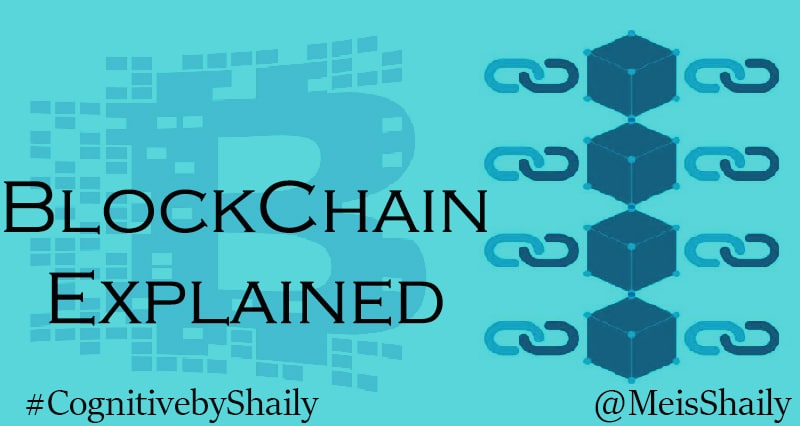
By permitting computerized data to be appropriated however not replicated, blockchain innovation made the foundation of another era of web technologies. Initially conceived for the computerized money, Bitcoin, “technocrats” world over are presently finding other potential uses for this innovation.
Bitcoin is frequently referred as computerized gold and for a justifiable reason. Presently, the aggregate estimation of the cash transacted through it is near US $9 billion. What’s more, blockchain can make different sorts of computerized esteem. Like the web you don’t have to be familiar with the blockchain in order to utilize it. In any case, having a fundamental understanding of this new innovation demonstrates the reason behind its success. Along these lines, I trust you appreciate my new blog entry on Blockchain.
Generally, organizations have been using databases as principal data sources to help transaction handling and calculation. Nevertheless, these databases are hardly shared between establishments because of many technology as well as security reasons. On the other hand, Blockchain is a different concept where parties can share, exchange and distribute database of transactions for transparency, safety, and productivity.
For our readers who are not well aware of Blockchain, an anatomy of the blockchain can be described by the following process:
In a Blockchain, the copies of database transactions are duplicated into many locations between several parties. After that they are parted into blocks which contain the details of the transaction like the seller, the purchaser, the rate, the contract conditions, and other important information. Now these blocks are being authorised by the whole network after joining the shared transaction details through encryption with the unique signatures of the parties. The transaction is considered authentic if the output of the encoding is same for all nodules. Further, these blocks are added with a chain of previous transactions if the block is authenticated. In case the block is illegal, consent of nodules will rectify the result in the non-conforming node.
What is the need of Blockchain?
Blockchain is not a panacea to sort out all the damaged business processes, but I personally believe that it is “up to the mark” to solve out many different problems in coming future. For instance:
- To build the faith between counterparties in the economy: Many P2P lodging sites like Airbnb have already started to change the lodging industry by creating a public market in private housing industry. But it is limited because of safety and security reasons and property damage.
- To put down transaction costs in endorsing title insurance: A major transaction cost is borne by the house owners and buying and re-financing property which includes title insurance and the process to search title can be very exhaustive.
- Restructuring clearing and payment of cash securities: In spite of low transaction costs such as in equities, up to 10% errors are caused which extends the time and manual involvement. Applying blockchain for the clearing and settlement of cash such as in repo, equities and leveraged loans the industry could save $11 – $12 billion.
- Refining efficiency in anti-money laundering (AML) and cutting down frauds: Blockchain could cut down the number of the fake transactions through the false identity as it can regulate the data needed for an account and improve it. So, storing account and payment information in a blockchain could be a added advantage. It will also ease the process of knowing a client and indicating the complaints of AML.
What are the components of BlockChain?
There are five main components of blockchain:
- Transaction definition
When a transaction is completed by a sender and transmitted to the network, a transaction message is generated having the details of the receiver’s address. The validity of the transaction is proved by the amount of the transaction as well as by the digital signature.
- Transaction authentication
The validity of the message is then authorised by the user of the computer network when he decrypts the signature.
- Block creation
After sometime when these transactions are brought in an updated form of ledger or block by a node in the network it transmits the block for validation.
- Block validation
The validating technology of blockchain is not same for all. For example, block chain of Bitcoin is based on technology called “proof-of-work”, Ripple and Ethereum use “Distributed Consensus” and “Proof-of-Stake” respectively. There are different ups and downs of the various technologies but common factor between all is that it assures us that each transaction is authentic and keeps away the fake transactions.
- Block chaining
When validation process is completed, the novel block is brought into the blockchain and the current condition of the ledger is broadcasted. All the process is finished in just 3 to 10 seconds.
For example, Bitcoin exchanges are sent from and to electronic bitcoin wallets, and are carefully marked for security. Everybody on the system thinks about an exchange, and the historical backdrop of an exchange can be followed back to the point where the bitcoins were delivered.
Here’s the clever thing about bitcoins: they are not present anywhere, even on a hard drive. We discuss somebody having bitcoins, however when you take a gander at a specific bitcoin address, there are no advanced bitcoins held in it, while you might be holding pounds or dollars in a financial balance. You can’t indicate a physical protest, or even an advanced record, and say “Here is bitcoin”.
What are the benefits?
The unmatched characteristics of the Blockchain enable it not only to rationalise present markets but also to reorganize markets and generate new ones. Some abridged examples and selected government and private sector companies that are empowering Blockchain are mentioned below:
- Easy identification and standing management: Blockchain gives security to stored data, upgrade users’ transaction online and analyse history by identifying and payment authorizations. It makes easy to create faith between parties. It can rationalize transactions and upgrade the evaluation quality.
- Allow transactions in a reorganised power market: Consumers in a particular area can be connected to local energy generators through blockchain which can allow real-time distributed power markets. A market equipped with blockchain could also upsurge spur approval of smart grid technology and grid safety.
- Increased efficiency and lessen risk: By keeping records in a blockchain title insurers can easily access the information that they require to clear a title. Real estate scams in growing could be lowered down as the ledger is harm proof.
- Lessen settlement times and resolution costs: A system equipped with blockchain can considerably lessen trade reconciliation time in just some days or hours. It can also help in lowering capital requirements, custody fees and OpEX in the process.
- Increase efficacy and transparency: By keeping account and information of payment in blockchain data quality could be improved and the rate of fake identified doubtful transactions can be reduced.
Airbnb
In April 2016, Airbnb acquired the ChangeCoin, a blockchain based Technology Company. In an interview with City AM, Nathan Blecharczyk, CTO Airbnb told that they are thinking of using blockchain in handing reputation information, saying that reputation is all when you think about Airbnb, and in future it will only increase so we are trying to find out every type of signs to assure us that a person is reputable and he can see some new signs plugged into their engine.
The ASX (Australian Securities Exchange)
The ASX (Australian Securities Exchange) has announced that it is working with Digital Asset Holdings to use block chain to replace CHESS (ASX’s clearing and settlement system for cash equities, and the electronic sub-register of these securities). This development appears timely, as CHESS was nearing its scheduled “end-of-life” (even though it remains very stable), and blockchain has begun to mature at the same time. Australia proved to a successful test-bed for blockchain, because the system is dematerialized (no physical share certificates) and clearing/settlement is currently centralized (though clearing competition has just been notionally approved, so any system will need to be designed for this). Australia’s economy was also relatively sheltered from the global financial crisis, so many key stakeholders were better equipped to cope with technological change. Australia’s banking system is stable, and many local banks have demonstrated their interest in blockchain technology.
The Australian Security Exchange ASX functioning with Digital Asset has announced to replace the CHESS with blockchain (Clearing and settlement system of ASX for cash equities, and the electronic security sub-register).
Can the existing discussion on the Blockchain be justified? Ever since Bitcoin initiated the method of safe distributed-ledgers to the global market, a large amount of contention has taken place regarding its capability for addressing the corporate issues. However, the debate mainly happens to be limited and focuses on the prospects for decentralizing markets and disrupting the mediators. In this blog, we have found 6 current advantages of block chain in the corporate sector that includes:
- Trust enhancement in the shared economic framework
- Development of a distributed smart-grid
- Decreasing the transactional rates
- Altering the perspective of money in the financial sectors
- Trade systems and their monitoring
Now, I’d like to hear from you.
Let me know in the comments section if you have any experienced any blockchain usecase. Also, please share this blog with your network on social media and follow me on:
Twitter: @meisshaily
and
subscribe to my Youtube channel: ShailendraKumarS to hear from senior leaders in the Analytics / Data Science industry.
On another note, saw this great offer from NordVPN, which looks like a great value and may be of interest:
